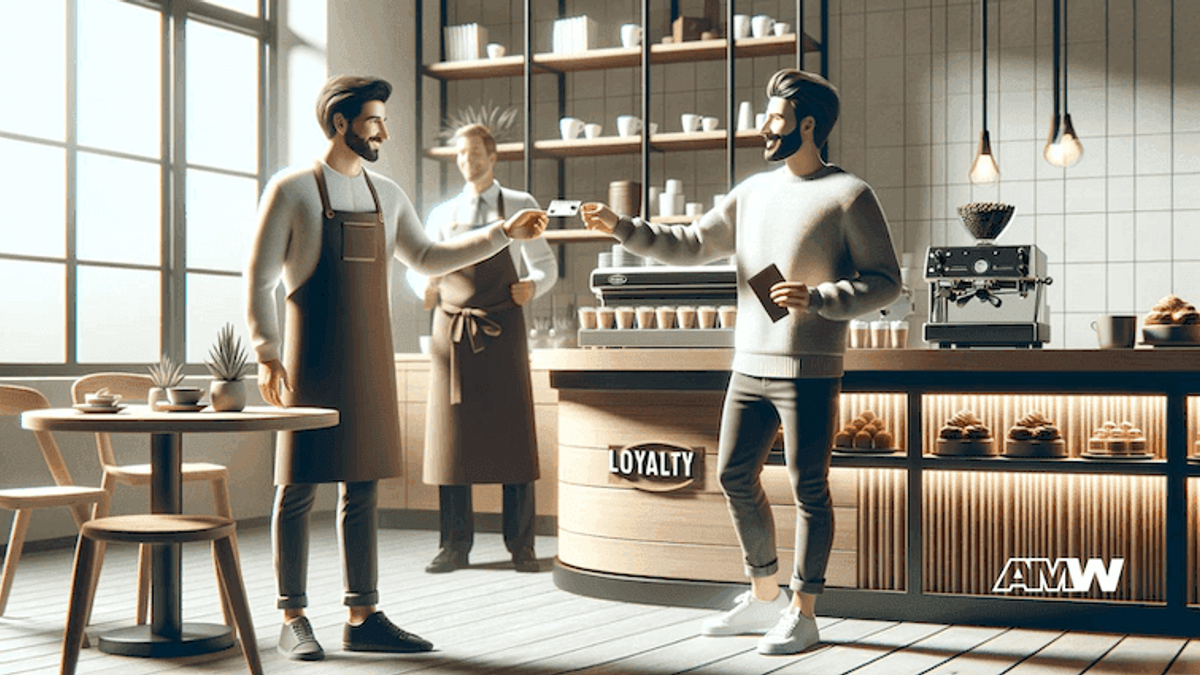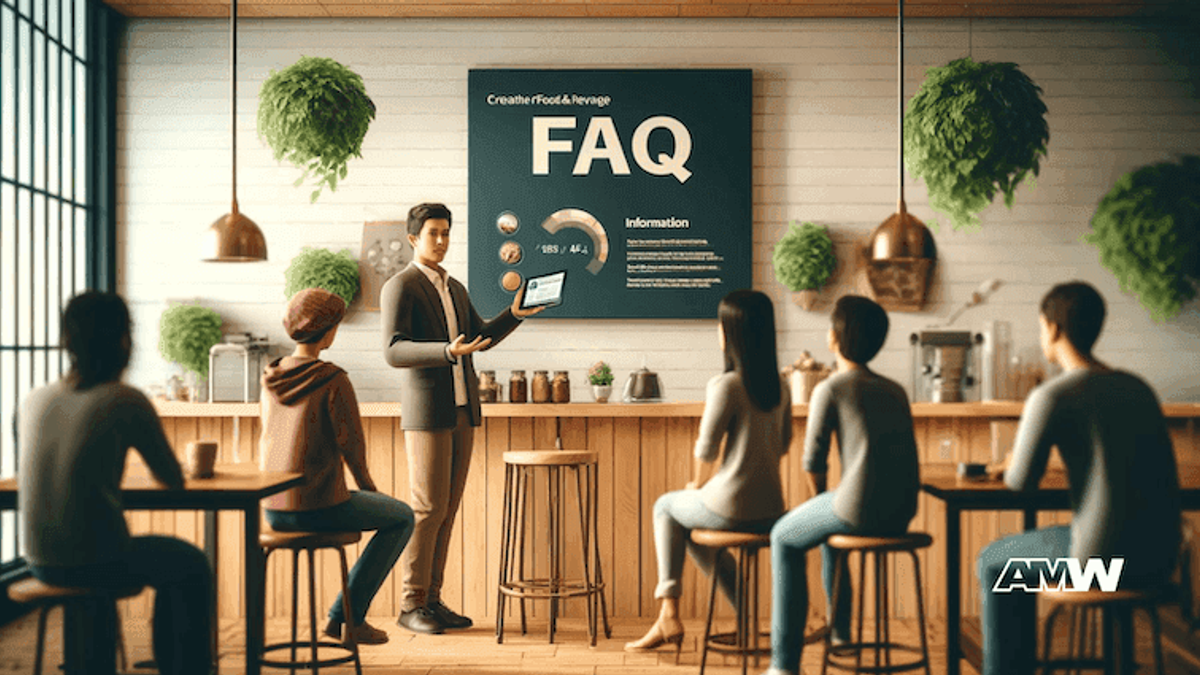Creative Food and Beverage Marketing Ideas to Make Your Products Stand Out

The waves of competition are relentless in the ocean of the food and beverage industry. Each day, countless beverage brands and food companies launch, aiming to carve out their niche.
Quick Summary
In the competitive landscape of the food and beverage industry, successful brands not only need great products but also effective marketing strategies that resonate with their target audience. Engaging storytelling, innovative packaging, and leveraging social media play crucial roles in forging connections and enhancing visibility. Experiential marketing and collaboration with influencers can foster customer loyalty, while content marketing builds lasting relationships, transforming casual consu
In such a crowded marketplace, more than merely having a great product is needed; the key to survival and success lies in how effectively you market that product. This is where the magic of creative marketing strategies comes into play, transforming the ordinary into the extraordinary.
Imagine walking down the supermarket aisle, where every shelf has options. Two products catch your eye, but one stands out because its packaging tells a compelling story of environmental benefits and community impact.
Ready to Grow Your Business?
Get a free consultation and custom strategy tailored to your goals.

This isn't just a marketing tactic; it's a narrative that connects with you. This is the power of creative food and beverage marketing—it's not just about selling a product but creating a connection that resonates with the target audience.
The objective of this post is not just to discuss marketing for food and beverage; it's to arm you, whether you are a budding entrepreneur or a seasoned marketing leader, with innovative and actionable marketing ideas tailored specifically for the food and beverage sector.
These ideas are designed to make your beverage brands seen and remembered, not just tasted but experienced.
Understanding Your Market

Market analysis in food and beverage is about much more than crunching numbers and tracking sales. It's about delving deep into the psyche of your potential customers.
For example, a beverage company might discover through analysis that its core consumers are predominantly health-conscious millennials who frequent food blogs and value sustainability.
This insight allows the company to tailor its marketing campaigns by highlighting their products' health benefits or environmental impact.
Identifying your audience is just the beginning. The most successful food and beverage businesses go further; they engage in continuous dialogue with their customers through social media platforms and digital marketing channels.
Consider a beverage brand that uses short-form video content to showcase the local sourcing of its ingredients. By doing so, it is not just selling a beverage; it is selling a story that aligns with the values of its target audience.
Understanding consumer trends and preferences is critical. In recent years, there has been a surge in demand for plant-based foods. A food and beverage company that recognizes this trend can leverage it through targeted advertising campaigns, social media marketing, and even influencer marketing, ensuring that they are not just part of the conversation but leading it.
By thoroughly understanding your market, you can craft a strategic marketing plan that reaches and resonates with your potential customers, transforming them into loyal customers who advocate for your brand.
This is the essence of effective food and beverage marketing: it's not merely about reaching an audience but creating meaningful engagements that foster lasting relationships.
Leveraging Social Media

The role of social media platforms like Instagram, Facebook, and TikTok in food and beverage marketing cannot be overstated. These channels are not just tools for broadcasting; they are stages for engaging and building relationships with your target audience.
Take, for example, a beverage brand that launched a campaign featuring short-form video content on TikTok to showcase the versatility of their drinks in homemade recipes.
The campaign used popular hashtags and collaborated with well-known food bloggers, significantly boosting online sales and brand visibility. This demonstrates the power of understanding and harnessing the specific dynamics of each platform to enhance your beverage marketing strategy.
Tips on Engaging with Customers and Creating Shareable Content:
- Show, Don't Tell:Use vibrant images and videos to tell your brand's story. Show your products in action, such as behind-the-scenes looks at how your beverages are made or how your food products can be used in recipes.
- Engage in Real-Time:Utilize live streams to launch new products, host Q&A sessions, or conduct live cooking shows. This real-time interaction significantly boosts engagement rates and customer loyalty.
- UGC:Motivate your customers to share their experiences with your products. Reposting customer content provides authentic endorsements and fosters a community feel.
- Contests and Giveaways:These are great for generating excitement and encouraging participation. Ensure the entry involves sharing your content or tagging friends to expand your reach and attract more customers.
Innovative Product Packaging

The saying "Don't judge a book by its cover" rarely holds in the food and beverage industry. Effective packaging design is crucial as it's often the first contact between your product and potential customers. Innovative packaging catches the eye and can communicate your brand positioning and unique selling point.
Consider a food and beverage company introducing a line of beverages in biodegradable containers with embedded seeds, which customers could plant after use.
This would catch the eye of eco-conscious consumers and position the brand as a champion of environmental sustainability, effectively communicating its commitment to environmental benefits.
Discussing Sustainable Packaging Solutions:
- Material Choices:Opt for recyclable, biodegradable, or renewable materials. This will attract eco-conscious clients and align with sustainable trends.
- Minimal Design:Minimize unnecessary elements to reduce packaging waste. This can reduce shipping costs and increase the efficiency of packaging processes.
- Educational Messaging:Use your packaging to educate consumers about the environmental impact of their choices and how they can help reduce it by choosing your brand.
By focusing on these innovative approaches in social media marketing and product packaging, food and beverage businesses can significantly enhance their market food appeal and increase sales while building a loyal base of customers who feel engaged with and committed to the brand.
These strategies are crucial for any beverage business looking to make a lasting impact in a highly competitive market.
Experiential Marketing Strategies

Experiential marketing is a dynamic and immersive way to connect with consumers by creating memorable and engaging brand experiences.
Experiential marketing can turn potential customers into loyal brand advocates, especially in the food and beverage industry, where taste and ambiance play pivotal roles.
For instance, imagine a beverage brand hosting a mystery flavor launch event where participants can taste new products in a themed setting that tells a story about the origins and inspiration behind the flavors.
Such events create a lasting impression and are often shared across social media platforms, amplifying brand visibility.
Ideas for Events, Tastings, or Pop-Up Experiences:
- Pop-Up Bars or Restaurants:Temporarily set up in high-foot-traffic areas to offer exclusive tasting sessions of your new product line.
- Virtual Reality Experiences:Using VR to transport customers to the source of your ingredients or to simulate a dining experience.
- Interactive Cooking Classes:Hosting events where customers can learn to make dishes using your products, facilitated by renowned food bloggers or chefs.
Case Studies of Successful Experiential Marketing Campaigns:
- A food and beverage company once transformed an urban park into a beach-themed party to promote its new tropical drink line. The event featured sand, palm trees, live music, and free samples, creating a mini-vacation experience in the middle of the city.
Ready to Grow Your Business?
Get a free consultation and custom strategy tailored to your goals.
- Another example is a beverage company that launched a series of meal events. In these events, meals prepared with their products were served in complete darkness, heightening the other senses and focusing on the taste.
Collaborations and Partnerships

Partnering with other brands or influencers can boost a brand's appeal and reach. The key is to partner with entities that align with your brand's values and appeal to your target audience.
For example, a beverage brand specializing in organic juices might partner with a health and wellness influencer to promote their products.
The influencer's endorsement could provide credibility and attract health-conscious consumers, effectively increasing online sales and improving business visibility.
Tips on Choosing the Right Partners for Cross-Promotions:
- Brand Alignment:Ensure the partner's brand values and customer base align with yours to maintain authenticity.
- Engagement Metrics:To gauge the potential impact of the partnership, look beyond follower numbers and assess engagement rates and audience interactions.
- Creative Synergy:Choose partners who bring creativity to the table, allowing for collaborative campaigns that are innovative and engaging.
Examples of Successful Collaborations:
- A food and beverage business partnered with a popular lifestyle app to create geo-targeted ads for users searching nearby dining options, increasing foot traffic during meal times.
- A collaboration between a beverage business and a famous music festival where exclusive beverage flavors were launched, leveraging the festival's extensive reach and vibrant social setting.
These experiential marketing and strategic partnership strategies foster deeper connections with consumers and create extensive networks that amplify brand visibility, enhance customer loyalty, and drive substantial growth for food and beverage brands.
Content Marketing and Storytelling

In food and beverage marketing, storytelling is not just about narrating your brand's history; it's about forging a connection that resonates emotionally with your target audience.
A compelling story can transform your food and beverage brand from a mere product into a part of your customer's daily lives, enhancing brand visibility and customer loyalty.
Effective Content Marketing Strategies:
- Educate Your Audience:Use informative content to enlighten your customers about the nuances of your products. For instance, a beverage company might share blog posts or videos detailing the ingredients' origin or their drinks' health benefits. This not only informs but also increases transparency and trust.
- Entertain:Create engaging and fun content that can capture the interest of potential customers. Food and beverage businesses could launch a series of cooking challenges on social media platforms featuring their products, encouraging followers to participate and share their creations.
- Engage:Encourage interaction through Q&A sessions, live tastings, or behind-the-scenes tours broadcast via social media channels. Engagement can be further amplified by integrating influencer marketing, where food bloggers showcase your products, adding credibility and reach.
Ideas for Content Types:
- Blogs and Articles:Deep dive into topics like the environmental impact of your packaging or the farm-to-table process of your ingredients.
- Videos:From high-production recipe videos to casual Instagram stories of day-to-day operations, video content remains highly shareable and effective in keeping your audience engaged.
- Infographics and Visuals:These are easy-to-digest pieces of content that quickly convey key messages about your beverage products or food items. They are ideal for sharing on Pinterest or Instagram.
Loyalty Programs and Promotions

Loyalty programs are a cornerstone of a robust food and beverage marketing strategy. They are designed to reward repeat customers and ensure their return.
A well-structured loyalty program can significantly increase sales and deepen customer relationships.
Innovative Ideas for Promotions:
- Tiered Rewards:Implement a system where customers earn more points per dollar as they reach higher spending tiers. This will encourage larger purchases and repeated visits.
- Seasonal Promotions:Offer special rewards during holidays or local festivals, which can be redeemed for limited-time items. This boosts sales and adds a festive touch to the customer experience.
- Referral Bonuses:Reward customers who bring new customers through referral programs. The referee and the referred get benefits, multiplying your customer base organically.
Ready to Grow Your Business?
Get a free consultation and custom strategy tailored to your goals.
Examples of Digital Tools and Platforms to Manage Loyalty Programs Effectively:
- Point-of-Sale Integrations:Modern POS systems can track customer purchases and automatically update loyalty points, providing seamless customer and staff experiences.
- Mobile Apps:Apps can serve as the hub for your loyalty program, allowing customers to check their points, receive push notifications about promotions, and even make purchases directly from their phones.
- Email Marketing:Automated email systems help keep customers informed about their rewards and encourage them to take action, whether redeeming points or taking advantage of a new promotion.
By harnessing the power of content marketing and innovative loyalty programs, food and beverage companies can create meaningful connections with their audiences that promote sustained growth and enhance the overall brand experience.
These strategies are not just about selling a product; they are about building a community around your brand that values what you offer and remains loyal.
Conclusion

Throughout this exploration into creative food and beverage marketing strategies, we have delved into various facets that can radically enhance how food and beverage businesses connect with their target audience.
From leveraging the dynamic power of social media platforms to crafting unforgettable experiences through experiential marketing, the potential to innovate and captivate is immense.
We've seen how innovative product packaging can function as a silent salesperson on the shelves and how content marketing can tell a story that resonates deeper than any traditional advertisement.
Additionally, loyalty programs have shown their worth in retaining customers and boosting sales through innovative reward schemes and personalized marketing efforts.
As you reflect on these insights, I encourage you to think outside the box. Each brand is unique, and thus, each marketing strategy should be tailor-made to fit its distinctive qualities.
Experiment with new techniques, mix and match methods, and don't be afraid to take risks to discover what makes your brand stand out in the bustling food and beverage market.
Engage with your customers, tell your story, and build a brand that meets and exceeds the expectations of a diverse and demanding consumer base.
FAQ

What is food and beverage marketing?
It involves a variety of marketing tactics and strategies designed to meet the needs of food and beverage businesses.
It focuses on promoting food and beverage products to different segments of consumers using targeted campaigns, influencing purchasing decisions, and driving business success.
Why is marketing important in food?
Effective marketing is crucial in the food industry as it helps build brand recognition, increases customer loyalty, and drives sales growth.
How do you promote a drink or food item creatively?
Promoting a food or beverage product can involve:
- Using high-quality visual content.
- Engaging with food bloggers and influencers for partnerships.
- Running limited-time offers to create urgency.
Such strategies enhance the product's appeal and encourage sharing among social networks.
What are some effective marketing strategies for food?
Effective strategies include digital advertising to reach a broader audience, hosting and participating in food festivals to increase direct consumer engagement, and leveraging content marketing to tell compelling stories about the brand and its values.
What is included in restaurant branding?
Restaurant branding includes everything from the logo design and menu aesthetics to the staff uniforms and the overall dining experience.
It establishes the restaurant's identity and sets expectations about the type of cuisine and the level of service customers will experience.
What kind of market is the food and beverage industry?
The vast and diverse industry encompasses everything from fast and casual dining to luxury restaurants and specialty food retailers.
Global trends influence health consciousness, environmental sustainability, and technological innovations.
What is the fastest-growing beverage market?
Currently, the fastest-growing beverage market includes sectors like plant-based milk alternatives, functional beverages, and craft spirits.
These segments rapidly expand due to increasing health awareness and consumer interest in unique, high-quality products.
By understanding these aspects, brands can effectively navigate the food and beverage industry, ensuring they grow and thrive in a market of opportunities and challenges.

Ready to Grow Your Business?
Get a free consultation and custom strategy tailored to your goals.
Frequently Asked Questions
What are the most effective creative marketing strategies for food and beverage brands in 2024?
The most effective strategies include leveraging social media platforms like TikTok and Instagram with short-form video content, implementing innovative sustainable packaging solutions, and creating experiential marketing campaigns. Focus on storytelling that connects with your target audience's values, such as environmental benefits or community impact. User-generated content, influencer partnerships, and interactive experiences like pop-up tastings are particularly powerful for building brand loyalty and increasing online sales.
How can small food and beverage companies compete with larger brands in marketing?
Small companies can leverage their agility by creating authentic, personalized content that larger brands often struggle to produce. Focus on niche markets and specific consumer preferences, engage directly with customers through social media platforms, and collaborate with local food bloggers and micro-influencers. Emphasize your unique story, local sourcing, and community connections. Cost-effective strategies include user-generated content campaigns, targeted digital marketing, and creative packaging design that stands out on shelves.
What role does sustainable packaging play in food and beverage marketing success?
Sustainable packaging serves as both a marketing tool and brand differentiator, particularly appealing to eco-conscious millennials who value environmental responsibility. Biodegradable containers, recyclable materials, and minimal design communicate your brand's commitment to sustainability. This packaging strategy can reduce shipping costs, attract environmentally conscious consumers, and provide educational messaging opportunities. Innovative examples include plantable packaging with embedded seeds or containers made from renewable materials that tell your sustainability story.
How do you identify and target the right audience for food and beverage products?
Conduct thorough market analysis beyond sales data by engaging in continuous dialogue through social media platforms and digital marketing channels. Study consumer trends like the surge in plant-based foods, analyze customer behavior on food blogs, and identify values-driven preferences such as health consciousness or sustainability. Use social media insights, conduct surveys, and monitor engagement patterns to understand your potential customers' psyche and tailor marketing campaigns accordingly.
What are the best social media marketing tactics for food and beverage brands?
Effective tactics include creating vibrant visual content showcasing products in action, utilizing live streams for real-time engagement, and encouraging user-generated content through contests and giveaways. Collaborate with food bloggers and influencers, use platform-specific strategies like TikTok's short-form videos for recipe demonstrations, and engage with trending hashtags. Focus on showing rather than telling your brand story, and create shareable content that fosters community engagement and drives online sales.
How can experiential marketing help food and beverage brands build customer loyalty?
Experiential marketing creates memorable, immersive brand experiences that transform potential customers into loyal advocates. Strategies include hosting pop-up bars, interactive cooking classes, virtual reality experiences, and themed launch events. These experiences are often shared across social media platforms, amplifying brand visibility organically. By engaging multiple senses and creating emotional connections through taste, ambiance, and storytelling, brands can build lasting relationships that go beyond traditional advertising methods.
What makes food and beverage packaging design effective for marketing purposes?
Effective packaging serves as the first contact between your product and potential customers, communicating brand positioning and unique selling points instantly. Key elements include eye-catching design that stands out on shelves, clear communication of benefits like health or environmental impact, and storytelling through visual elements. Consider innovative features like QR codes linking to brand stories, sustainable materials that align with consumer values, and packaging that encourages social media sharing through distinctive, Instagram-worthy design.
Related Articles

Food and Beverage PR: Whetting Appetites with Effective Communication
In the food and beverage industry, more than merely having a great product is needed to capture the attention of your desired audience. The marketplace is inundated with options, and consumers are

What Is Branding?
Discover the essentials of branding, including identity, strategy, and building strong brand equity for business success.
Understanding the Product Marketing Approach
Today, in a competitive business environment, a strong product marketing strategy can determine whether a business succeeds or struggles. A well-crafted product marketing strategy can help compani